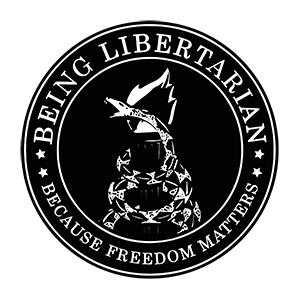Though libertarians, Western conservatives, and classical liberals all support “liberty,” the definitions and contexts have varied quite significantly. To any lover of liberty, it is important to determine exactly what liberty means, and in what context.
Edmund Burke, the father of conservatism, was a strong advocate for liberty, as were John Stuart Mill and Lord Acton. Many progressives today also advocate for liberty, as did the revolutionaries of both the French and American revolutions.
But to say they were all part of the same worldview, or that they shared the same conception of liberty, would be an incredible mistake. When reading the works of past philosophers and thinkers, it is important to be aware of these differences in perspective. Modern differences can be framed as “negative” and “positive” liberty, but even this isn’t precise when applied to older thinkers.
Burkean Liberty
Edmund Burke’s definition takes issue with a large portion of the libertarian movement, though Rothbardians and paleolibertarians might find a shared vision. Burke was sympathetic to the American colonists, but strongly opposed the revolutionaries in France. He opposed the liberty of the more extreme liberals, which he called “solitary, unconnected, individual, selfish” liberty. But soon after, he clarifies his own definition.
“The liberty I mean is social freedom. It is that state of things in which liberty is secured by the equality of restraint. A constitution of things in which the liberty of no one man, and no body of men, and no number of men, can find means to trespass on the liberty of any person, or any description of persons, in the society. This kind of liberty is, indeed, but another name for justice; ascertained by wise laws, and secured by well-constructed institutions. I am sure that liberty, so incorporated, and in a manner identified with justice, must be infinitely dear to every one who is capable of conceiving what it is. But whenever a separation is made between liberty and justice, neither is, in my opinion, safe.”
Burke viewed society as a collection of organizations and institutions, of natural hierarchies and social order. He did not see individuals as able to separate themselves from the rest of society, since human beings are naturally interconnected with others. In summary, Burke saw liberty as something maintained by tradition and custom through private communities and institutions. These strong institutions will keep tyrannical government at bay.
Mill’s Utilitarian Liberty
John Stuart Mill’s On Liberty is one of the most popular texts of classical liberalism. Mill’s idea of liberty is quite distant from that of Burke’s, and expands further than the standard “lack of coercion” definition of negative liberty. Though lack of coercion is certainly a large component of it, he adds:
“… there needs protection also against the tyranny of the prevailing opinion and feeling, against the tendency of society to impose, by other means than civil penalties, its own ideas and practices as rules of conduct on those who dissent from them.”
Mill’s liberty was more individualistic, seeing not just government but also private society as a threat to one’s liberty. Mill also justified liberty on utilitarian grounds, rather than as a natural right.
Acton’s Ordered Liberty
Lord Acton, one of the greatest liberals of his time, drew inspiration from Edmund Burke. Acton defended liberty against the threats of centralized absolutist government and bureaucracy. He believed in the common definition of liberty in the negative sense, as “prevention of control by others,” though was quick to add that this requires self-control. Acton clarifies his definition of liberty to mean:
“… the assurance that every man shall be protected in doing what he believes is his duty, against the influence of authority and majorities, custom and opinion.”
Thus he is, unlike Burke and like Mill, an individualist. However, unlike Mill, he leans more towards Burke’s emphasis that liberty is not about doing whatever one wants, but about doing what one ought to do. Liberty comes with responsibility, and those that view liberty as a free pass to do whatever one wants will quickly lose it.
Positive Liberty
Positive liberty is not normally part of the modern libertarian tradition. This form is liberty is advocated by most progressives, and typically operates in opposition to negative liberty and in alignment with egalitarianism. Positive liberty is the ability to do what one wants. Though one may be free from coercion, this does not make them free to travel the world. In this sense, the redistribution of wealth and free healthcare can help achieve positive liberty at the expense of others’ negative liberty.
Regardless of one’s stance on each form of liberty, it is important to understand these different traditions of liberty, and the ramifications of each definition. It is never enough to simply advocate for “liberty” in the abstract. One will quickly find that defending liberty sometimes means conflict with others defending their own version of liberty.









[…] was truly a Burkean conservative, and therefore was a defender of liberty in the Burkean sense. In this sense, government and the state are not the same thing. Scruton was a critic of the state, […]
Comments are closed.